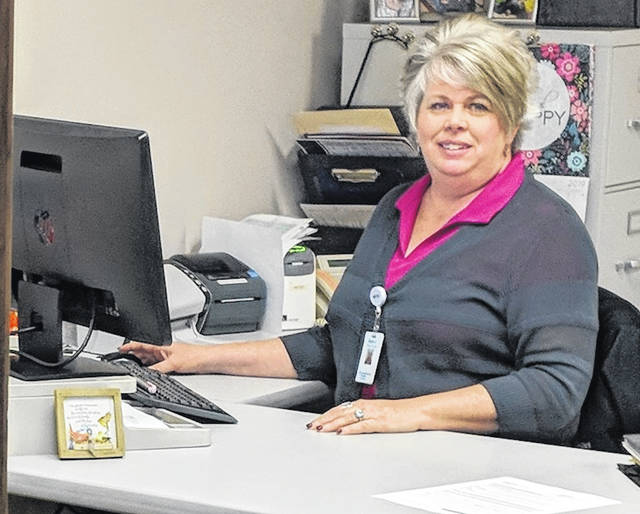MOUNT GILEAD — Despite a pending lawsuit with Morrow County Commissioners in the Ohio Supreme Court and questions about proposals for purchase of the hospital by Avita Health System, the Morrow County Hospital Board and professional staff remained upbeat about the future at the Oct. 22 board of trustees meeting.
Morrow County Hospital Controller Conni McChesney presented the hospital board of trustees with the 2020 Capital and Operating Budget. She noted that the operations budget is $785,000 better than originally budgeted for 2019. McChesney said the 124 days cash on hand was the highest she has seen in her 15 years at MCH.
Other positive numbers include the anticipation of a small increase in patient gross revenue services for 2020 based on the June volume this year. There is also an increase in urgent care patient numbers, partly due to the new weekend hours.
Dr. Thomas Freundlich reported that patient numbers for physicians are up. Much of the reason for that is the new EPIC phone system that has increased efficiency and allowed doctors to see more patients.
Chief Nursing Officer Le-Ann Harris reported that the new blood draw station will be open November 4th on the first floor by reception. There is an eight month report of zero patient falls and a 3.8 out of 4 points in the patient satisfaction survey.
The board discussed getting the word out about both new and established services at MCH.
“We need to get the word out about our new physicians, the new blood draw station and urgent care hours,” said Pat Drouhard.
McChesney also listed negative numbers that include a lower number of in-patients. Surgery patients are about the same as last year.
A major concern of county citizens attending the meeting is the loss of full-time employees from 153 to 146 (a 19-percent loss predicted for 2020). McChesney said after the meeting that this loss is due to attrition, adjustment of hours and changes in position, rather than layoffs. The loss will not result in any loss of services.
The total number of employees is 208, and 250 with contracted employees.
The budget has slated a two percent increase for pharmacy supplies and there will be a decrease in federal funding from the hospital Care Assurance Program of almost $200,000.
“The hospital is dependent on the levy for survival,” hospital CEO CJ Miller said. The $1,350,000 million from the levy is just five percent of the operating budget, but it keeps the hospital near a break-even balance.
“We are a lean organization. The board has taken a conservative approach and I agree with their strategies,” said Miller who lives in Morrow County with his family. Miller, a physical therapist, came to MCH in 2005 as Rehabilitation Services Director. He was promoted to Vice President of Ancillary Services in 2009 before taking the position of President and CEO in 2015.
Miller listed strategies of the board to stabilize the hospital that include: paying down debt and paying cash for equipment, maintaining investments in technology and controlling expenses. An example he gave was the significant cuts in management the board made.
Residents may disagree with cuts of some of the services the board made, and Miller acknowledges that the decisions to make those are very difficult for the board.
“The whole goal is to maintain and then grow services the community will support,” he said.
Patient numbers in Urgent Care have increased significantly since weekend hours were added this fall. Although reimbursements are lower for the Urgent Care department than the Emergency Department, he sees the increase in numbers as a positive for both the hospital and patients who will be paying less out of pocket for the Urgent Care. He sees that patients are likely to return for other services after they’ve had a good experience in Urgent Care.
Although Miller and the board are aware of rumors of the hospital’s closure, Miller stated emphatically, “We have had no discussions to close.”
Beyond the conservative plans that Miller outlined, he and McChesney listed several ways that OhioHealth supports MCH. A primary way OhioHealth supports is through resourcing of surgeons, doctors and specialists as well as providing Nurse Practitioners for Urgent Care.
Being part of the OhioHealth System also enables the hospital to take advantage of lower fees for many services and lower prices when purchasing supplies. Equipment is also monitored by OhioHealth technicians.
When asked what keeps him awake at night, Miller said, “I’m sleeping very well at night. I have faith in the board and associates here are focused on patient care. People are here for the right reason — to serve their fellow man.”






